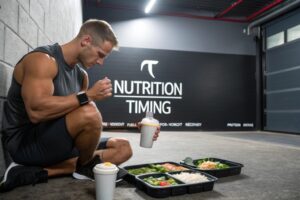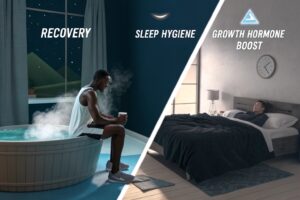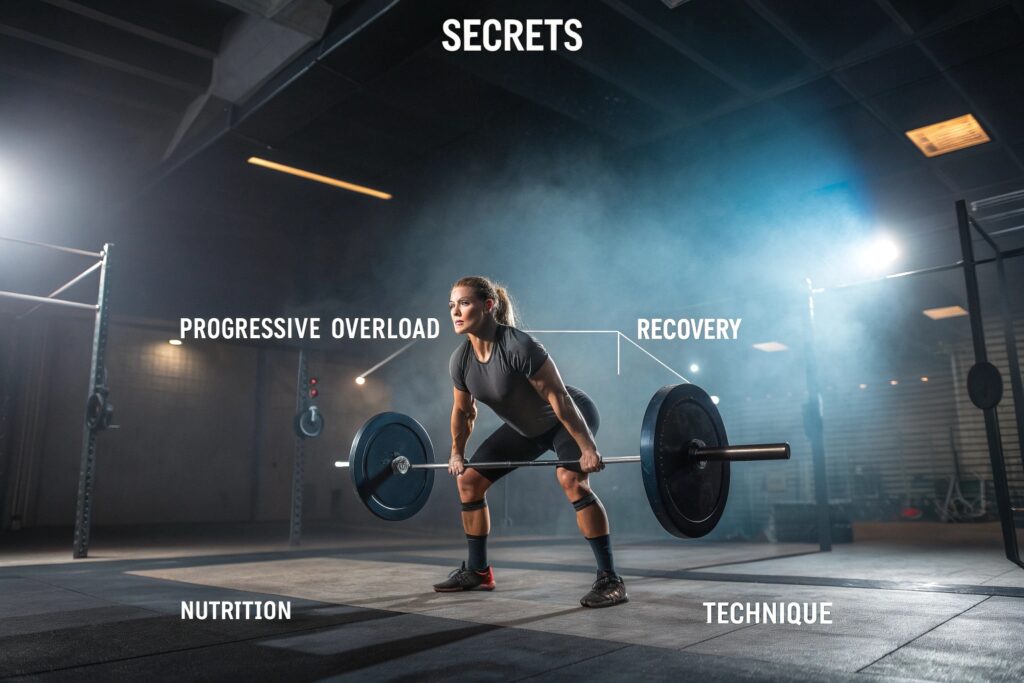[Introduction]
In a world where gyms market the latest equipment and “quick‑fix” programs, the truth is that real strength gains come from a handful of time‑tested principles most trainers keep under wraps. Below you’ll uncover 5 proven strength‑training secrets the gyms don’t want you to know—each backed by scientific research and real‑world results. Master these tactics, and you’ll finally smash plateaus, build lean muscle faster, and train with confidence.
Secret #1: Progressive Overload Isn’t Just About Adding Weight

Most beginners think progressive overload means loading the bar with heavier plates every week. While load is a critical variable, elite athletes manipulate **four additional dimensions**—volume, frequency, tempo, and range of motion—to keep the stimulus novel. By adjusting any of these factors, you force your muscles to adapt without the risk of over‑loading a single session.
1.1 Volume Manipulation
Increasing total work (sets × reps × load) is the most controllable way to up‑regulate intensity. For example, add an extra set to your squat protocol or increase the rep range from 6–8 to 10–12 every 3‑4 weeks. Studies show that a 10‑15% rise in weekly volume can stimulate 12‑20% more muscle protein synthesis compared to weight‑only progression.
1.2 Frequency Tuning
Training a movement pattern more than once a week spreads the stimulus and improves motor learning. Research from the Journal of Strength & Conditioning Research indicates that training a muscle group three times per week produces superior hypertrophy to a single weekly session, even when total volume is matched.
1.3 Tempo Control
The speed of each rep phase (eccentric, pause, concentric) dramatically affects fiber recruitment. A 3‑2‑1 tempo (3‑second lowering, 2‑second pause, explosive lift) increases time‑under‑tension and maximizes type II fiber activation, leading to denser muscle fibers. Alternate tempos every 4‑6 weeks to keep your nervous system guessing.
1.4 Full‑Range Mastery
Partial reps may let you lift heavier, but they neglect the muscle’s stretch‑shortening cycle. Incorporating deep squats, full‑range bench presses, and hip‑extension exercises ensures connective tissue strength and joint stability—key for long‑term progress and injury prevention.
Secret #2: The Power of “Post‑Activation Potentiation” (PAP)
Post‑Activation Potentiation is the neurological boost you get after performing a heavy, low‑rep set that “primes” your muscles for an explosive movement. Gyms rarely teach it because it requires precise timing and programming, yet it can add up to 10‑15% more force production in the subsequent set.
To harness PAP, perform a heavy compound lift at 85‑90% of your 1RM for 2–3 reps, rest 3–5 minutes, then switch to a lighter, explosive exercise (e.g., box jumps or speed bench presses). The heavy load activates the motor units, while the short rest allows phosphocreatine stores to replenish, resulting in a super‑charged second set.
2.1 Ideal PAP Protocols for Different Goals
-
- Strength‑focused athletes: 3‑5 heavy singles → 4‑6 minute rest → 3‑5 explosive singles.
-
- Power athletes (football, basketball): 2 heavy reps → 3‑4 minute rest → 6‑8 plyometric reps.
-
- Bodybuilders: Heavy set → 2‑3 minute rest → 8‑12 high‑velocity reps (e.g., “speed” bench presses).
2.2 Common Mistakes & How to Avoid Them
• Too short rest: Leads to fatigue, negating potentiation.
• Too long rest: The potentiation effect dissipates.
• Overly heavy priming set: Reduces form quality on the explosive movement.
Secret #3: Nutrition Timing Beats Calorie Counting for Strength Gains
While a calorie surplus is essential for muscle hypertrophy, when you place those nutrients around your training window can be the difference between a stalled plateaus and consistent growth. Gyms often sell supplements, but they neglect the timing of whole‑food protein and carbs, a secret weapon for elite lifters.
Research shows that consuming 0.4‑0.5 g protein per kilogram of bodyweight within the **“anabolic window”** (30‑60 minutes before and after training) maximizes muscle protein synthesis (MPS). Pair that protein with 30‑50 g of fast‑digesting carbs to spike insulin, which acts as a nutrient‑shuttle, delivering amino acids directly to muscle cells.

Nutrition Timing for Strength Gains
3.1 Pre‑Workout Fuel Blueprint
-
- 30‑60 min before: 20‑30 g whey protein + 30 g fast carbs (e.g., fruit, honey).
-
- 15 min before: Caffeine (150‑200 mg) for improved focus and strength.
3.2 Post‑Workout Recovery Stack
-
- Immediately after: 30‑40 g whey isolate mixed with 40‑50 g dextrose or maltodextrin.
-
- Within 2 hrs: Whole‑food meal containing 25‑30 g protein, 50‑70 g complex carbs, and healthy fats.
3.3 Daily Protein Distribution
Aim for 4‑5 protein feedings spaced 3‑4 hours apart (e.g., 6 am, 10 am, 2 pm, 6 pm, 10 pm). This steady amino acid envelope keeps MPS elevated for up to 20 hours each day, supporting continuous repair and growth.
Secret #4: Leveraging “Auto‑Regulation” to Outsmart Gym Routines
Most commercial programs rely on rigid percentages (e.g., 5×5 at 75% 1RM). Auto‑regulation flips that script: you adjust training intensity on the fly based on how you feel that day, using tools like RPE (Rate of Perceived Exertion) or the “Rep‑Goal” method. Gyms avoid this because it demands personalized coaching—something they can’t scale easily.
By listening to your body, you prevent overreaching and ensure you’re always training at an optimal intensity. When you’re fresh, you can push beyond your prescribed weight; on a fatigued day, you back off slightly, preserving technique and reducing injury risk.

4.1 RPE Scaling Explained
RPE is a 1‑10 scale where 10 = “cannot do any more reps,” and 6 = “light, easy.” For strength work, aim for an RPE of 7‑8 (2‑3 reps left in the tank). If you’re consistently hitting RPE 6, increase the load by 2.5‑5 lb. If you’re hitting RPE 9‑10, drop the weight by the same amount.
4.2 The Rep‑Goal Method
Choose a set‑rep scheme (e.g., 4 × 5) and a “rep goal” (e.g., 5 reps). Perform the first set; if you hit the rep goal with good form, add 5 % load for the next set. If you fall short, stay at the same weight or reduce by 2.5 %. This dynamic progression ensures continual overload without overshooting.
4.3 Auto‑Regulation Tools
• Velocity‑Based Training (VBT):** Use a linear position transducer to measure bar speed; slower speeds indicate higher fatigue.
• Barbell RPE Cards:** Quick visual references that help you log perceived effort on the spot.
• Training Apps (e.g., Strong, Juggernaut):** Offer built‑in auto‑regulation templates.
Secret #5: Prioritizing Recovery with “Contrast Baths” & Structured Sleep Hygiene
Even the most advanced training plan will crumble without proper recovery. While gyms push you to the next session, they seldom disclose the power of contrast water therapy (alternating hot and cold) and disciplined sleep hygiene—two low‑cost, high‑impact recovery hacks rarely mentioned in commercial marketing.
Contrast baths stimulate vasodilation and vasoconstriction cycles, which flush metabolic waste, reduce inflammation, and accelerate nutrient delivery to muscle tissue. Pair this with a strict sleep schedule, and you dramatically increase growth hormone (GH) secretion, an essential hormone for muscle repair.

5.1 How to Execute a Contrast Bath
Cold immersion: 10 °C (50 °F) for 1 minute.
Hot immersion: 38‑40 °C (100‑104 °F) for 2 minutes.
Repeat: 4‑6 cycles, finishing with cold.
Do this within 30 minutes post‑workout for maximal effect.
5.2 Sleep Hygiene Blueprint for Strength
-
- Consistent Bedtime: Go to bed & wake up at the same time daily—even on weekends.
-
- Pre‑Sleep Routine: Dim lights 60 min prior, avoid screens, and perform 5‑10 min of gentle stretching.
-
- Optimal Environment: Keep bedroom temperature at 18‑20 °C (65‑68 °F) and use blackout curtains.
-
- Nutrition: A light casein‑protein snack (20 g) before bed sustains amino acid delivery overnight.
Aim for 7‑9 hours of uninterrupted sleep; each hour of deep sleep can add ~0.2 kg of lean muscle over a month.
5.3 Tracking Recovery Metrics
Use a simple daily questionnaire: rate muscle soreness (0‑10), sleep quality (0‑10), and mood/stress levels (0‑10). If any score falls below 5, schedule an extra recovery day or dial back intensity to prevent overtraining.
Putting It All Together: A Sample 8‑Week Blueprint Using the 5 Secrets
Below is a concise, periodized plan that weaves each secret into a cohesive program. Feel free to adjust the exercises to suit your equipment, but keep the structure intact for optimal results.
Weeks 1‑2: Foundations & Baseline
-
- Training Frequency: 4 sessions/week (Full‑body).
-
- Progressive Overload: Start with 3 × 8 at RPE 7, increase volume by 1 set each week.
-
- PAP: After each main lift, do 3 × 3 “speed” reps at 50 % 1RM.
-
- Nutrition: Pre‑workout 20 g whey + 30 g carbs; post‑workout g whey + 45 g dextrose.
-
- Recovery: Contrast bath immediately after session; 8 hrs sleep target.
Weeks 3‑5: Intensification
-
- Training Frequency: 5 sessions/week (Upper/Lower split).
-
- Auto‑Regulation: Use RPE 8 for main sets; adjust load daily.
-
- PAP: 1 heavy set (85 % 1RM, 2 reps) → 4‑minute rest → 5 explosive reps.
-
- Nutrition: Add 10 g casein before bed; maintain 1.8 g protein/kg/day.
-
- Recovery: Add 1‑day active recovery (light cardio, mobility) + contrast bath.
Weeks 6‑8: Peak & Deload
-
- Training Frequency: 4 sessions/week (Power‑focused).
-
- Tempo Variations: 3‑2‑1 on heavy sets, 1‑0‑1 on speed sets.
-
- PAP: Heavy singles → 5‑minute rest → 3 explosive singles.
-
- Nutrition: Carb‑cycling (high carb on training days, low on rest days).
-
- Recovery: Extend sleep to 9 hrs; incorporate a 48‑hour full rest after week 8.
By faithfully applying these five secrets, you’ll experience measurable strength gains, faster muscle growth, and a reduced injury rate—advantages that most commercial gyms simply don’t advertise. Commit to the science, track your progress, and watch your physique transform beyond what traditional “gym‑only” programs ever promised.
Conclusion: Unlocking the Hidden Blueprint for Real Strength
The fitness industry thrives on selling you the next shiny gadget or “miracle” program, but genuine progress lies in mastering the fundamentals that most gyms keep under lock and key. From mastering progressive overload beyond mere weight, to exploiting post‑activation potentiation, timing your nutrition, auto‑regulating intensity, and prioritizing cutting‑edge recovery, these five proven strength‑training secrets will give you the competitive edge you’ve been searching for. Start integrating them today, stay consistent, and claim the results that gyms don’t want you to know you’re capable of achieving.



